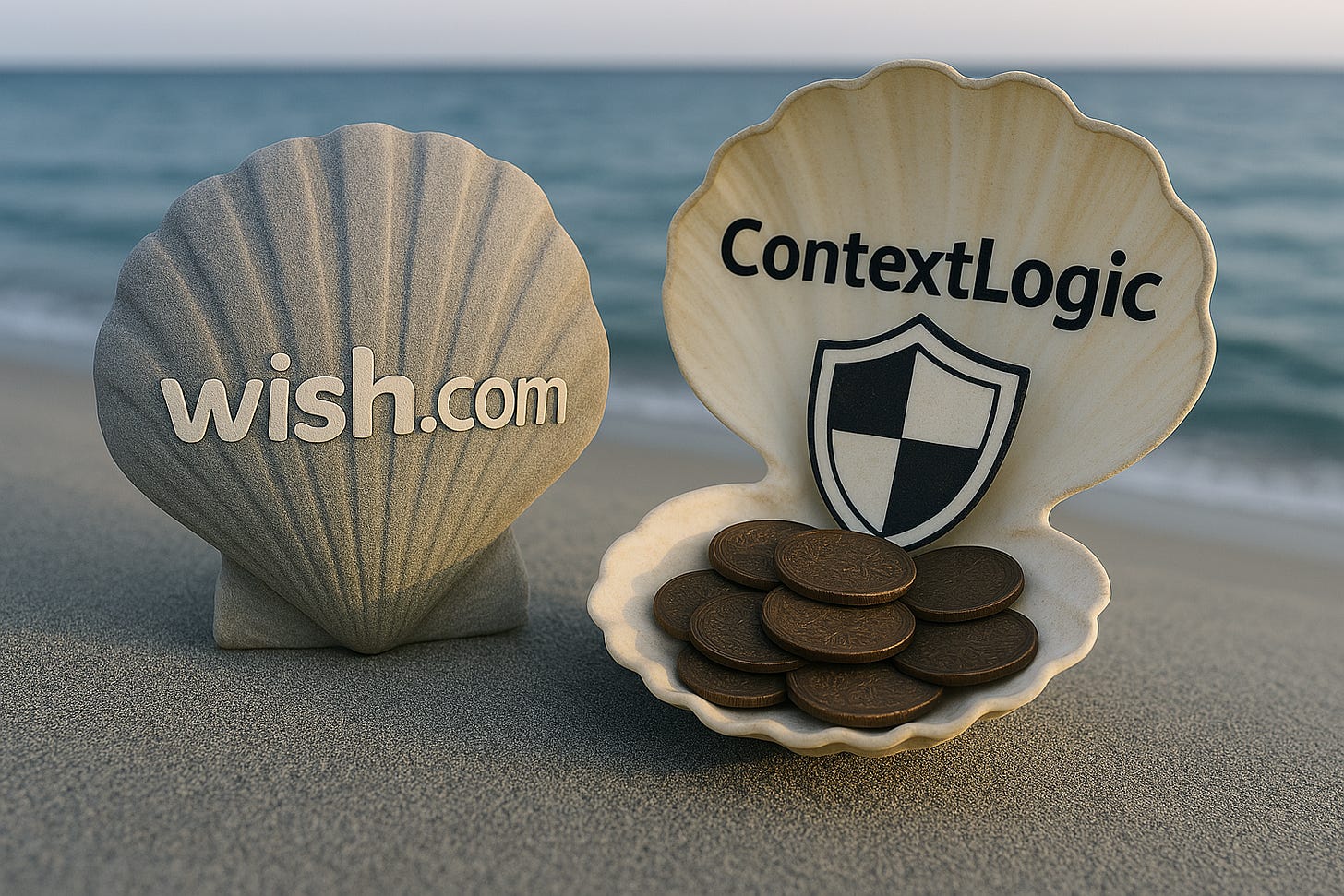ContextLogic Inc. (LOGC): A $173M Microcap Sitting on $225M Cash and $2.8B in Federal NOLs
Heads you win, tails you break even: how a tiny team controls $2.8 billion in tax shields—and why this could be a classic special situation
This is a special situation involving a small-cap company with no active operating business. It centers on compensation incentives and requires a solid understanding of how Net Operating Losses (NOLs) work—so yes, you’ll need to know a lot about taxes. I’m not a tax attorney and don’t pretend to be one. I’ve been following these developments out of personal interest, so please read the disclaimer at the end—and if this setup intrigues you, make sure to do your own research.
Having said that, let’s start from the beginning.
How Did We End Up Here
Let’s go back to the year 2020. The pandemic was in full swing. Everyone was in lockdown, and e-commerce businesses were exploding. That year, Wish.com did $2.5 billion in revenue. Prospects looked good, and acquiring new users was all that mattered. Marketing investments were sky-high, and profitability was only an afterthought
Fast forward to 2024, after years of losses and decreasing revenue, Wish.com's operating assets were sold to Qoo10 for $173 million in cash.
The party was over, and a new strategic direction was needed.
That was when the ContextLogic Inc. (LOGC) board, Wish's parent company, decided to retain the cash, cut operational expenses, and make the most of the massive operational losses accumulated during the heyday years, effectively becoming an NOL vehicle.
In today’s piece I’ll review LOGC opportunity. This is a continuation of my previous article titled “Why Failed Companies’ Hidden Tax Assets Might Be Your Most Profitable Investment Yet in 2025”.
Why Failed Companies’ Hidden Tax Assets Might Be Your Most Profitable Investment Yet in 2025
Ok, I knew that 2025 wasn’t going to be a walk in the park, but I definitely didn't have this level of...eventfulness on my bingo card. So, what do we do? Well, there are a lot of interesting things to look at. Today, I’ll discuss investing in NOL vehicles.
Let’s dive in.
Keep reading with a 7-day free trial
Subscribe to Polymath Investor to keep reading this post and get 7 days of free access to the full post archives.





